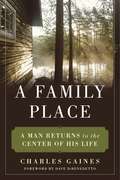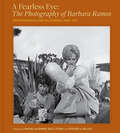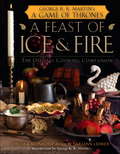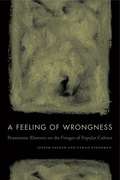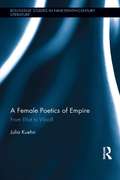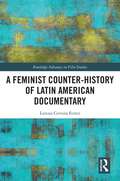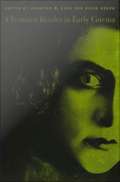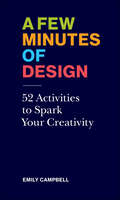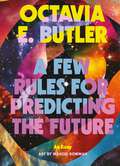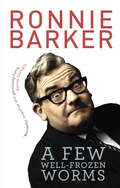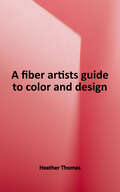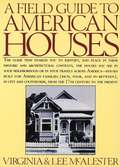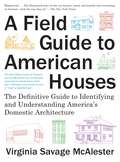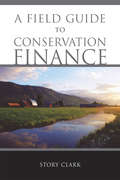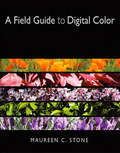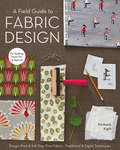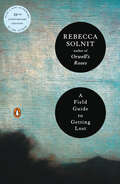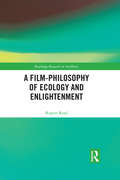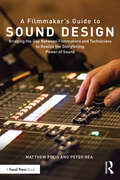- Table View
- List View
A Dupatta Is . . .
by Marzieh AbbasA Dupatta Is..., written by Marzieh Abbas and vividly brought to life by the artwork of Anu Chouhan, is a loving and lyrical ode to the dupatta. A dupatta is so much more than a beautiful piece of fabric.A dupatta is sound—swooshing and swashing like a superhero cape.A dupatta is scent—cinnamon and cardamom, crushed coriander and peppermint oil.A dupatta is fun—playing peekaboo and building cushion forts with dupatta canopies.Dupattas—shawls traditionally worn by women in various cultures of South Asia—are beautiful and colorful of course, but they're also fun, functional, and carry the sounds and smells of family and identity.
A Elaboração de Cerveja - Para o Principiante
by Kyle Richards João Campos MonteiroSinopse Descrição do produto A Elaboração de Cerveja Para o Principiante para e-book Erga um copo de cerveja bem fresquinha! Não há nada melhor do que uma boa cerveja para resolver as coisas, com exceção... de uma boa cerveja feita por si mesmo! Então, arregace as mangas, atire-se a alguns salgadinhos, e ponha uma cara de quem se vai divertir: está na hora de fazer cerveja! A Elaboração de Cerveja Para o Principiante leva-o passo-a-passo desde lamber os lábios até ao tchim-tchim com canecas da sua própria cerveja fresquinha com os amigos! Não necessita de ter experiência, pois nós dividimos o processo em passos simples, para que qualquer pessoa possa fazer uma deliciosa e refrescante cerveja na sua própria casa. Encontrará neste e-book links para lojas em Portugal que vendem todos os produtos de que vai necessitar. Há tantas cervejas no mercado hoje em dia, que pode gastar uma fortuna à procura da sua favorita. Com A Elaboração de Cerveja Para o Principiante pode aprender como fazer a cerveja de que gosta. No entanto, quer tenha um gosto simples ou sofisticado, A Elaboração de Cerveja Para o Principiante dará ao principiante as ferramentas necessárias em termos simples, para elaborar a sua própria cerveja. Experimente o orgulho de a elaborar sozinho, enquanto se diverte ao fazê-lo!
A Family Place: A Man Returns to the Center of His Life
by Charles Gaines Dave DiBenedettoIn the summer of 1990, writer Charles Gaines and his artist wife, Patricia, bought 160 acres of wild land on the northeast coast of Nova Scotia. They believed they were simply buying a remote getaway spot, but within a few months a more complex dream for the property developed. By midwinter, they had begun to see the land as a place where family intimacy might be reclaimed, as a home that might heal their recently battered marriage, and as an opportunity to take on a big, risky, long-term project instead of settling into the caution and gradual losses of middle-class middle age. Enlisting their children and their daughter’s carpenter boyfriend, they decided to build a cabin on the land the following summer, to build it with their own hands, as a family venture.A Family Place gracefully mixes a narrative of that summer’s sometimes harrowing, sometimes hilarious, sometimes heartbreaking events with passages of the family’s history that show its members as real people and dramatize what is at stake for each of them in Nova Scotia. Gaines describes the process of building a cabin while living in tents without electricity or running water, and the pleasures and limitations of a life so simplified that a week’s biggest social event is a bonfire. He draws a deft portrait of the small, generous, hearth-centered Acadian community of farmers and lobster fishermen surrounding their land, and traces the history of that land to its original French-Acadian owner. And he tracks the mood of his family through the long, difficult summer, from initial enthusiasm to near mutiny, and finally to exhilaration and deep satisfaction at having built something that will last, having rebuilt a family in the process.
A Fearless Eye: San Francisco and California, 1969–1973
by Barbara RamosA captivating volume that transports us onto the San Francisco streets of the 1970s through the black-and-white images of a previously unknown master of 20th-century photography, Barbara Ramos. "Published for the first time in A Fearless Eye, Ramos’s work captures minute and mesmerizing everyday scenes in a city that was about to change drastically." —The New York Times Book Review “Ramos’s decision to release A Fearless Eye now, after a 50-year hiatus from photography, is certainly a gift to California and beyond. But it’s especially a gift to those of us who love San Francisco: its streets, its people, its history. Ramos has frozen each of those in time and given us a gorgeous permanent record of this city’s past.” —KQEDUnearthed fifty years after they were originally taken, Ramos's photographs offer up stirring scenes from everyday life—a group of Hari Krishnas sing on Market Street, a window dresser changes a mannequin at the Union Square Macy’s, two men lean in for a kiss at a peace rally in Golden Gate Park. A Fearless Eye brings Ramos's images to print for the very first time, introducing audiences to a photographer whose work belongs alongside that of Robert Frank, Diane Arbus, and Vivian Maier. Featuring a preface by award-winning novelist and essayist Rachel Kushner, an essay by photography historian Sally Stein, and an interview with Ramos by photographer and writer Stephen A. Heller, this enthralling street photography book is a fascinating time capsule of a bygone moment in California history.FILM PHOTOGRAPHY BOOK: In his profile of Barbara Ramos in Black & White magazine, Stephen A. Heller calls her photographs “startling in their humanity, objectivity, and originality," observing that they "deserve to share center stage with those of Frank, Maier, Arbus, and Friedlander.” A Fearless Eye provides an exciting introduction to this previously unsung talent through a curated selection of Ramos's incredible archival images. REDISCOVERED FEMALE ARTIST: Throughout the early 1970s, Barbara Ramos became obsessed with exploring the world through her camera, but she was forced to switch careers to make a living at the time. The rediscovery of her photographs is now leading to overdue public recognition of her work, including a prominent Black & White magazine profile and an exhibit at the Sanchez Art Center in Pacifica. SAN FRANCISCO HISTORY GEM: This volume celebrates the people and history of San Francisco. It's a charming tribute to the city with a uniquely vintage visual flavor, a must-have for longtime residents and visitors alike. Perfect for: Lovers of vintage, historical, and street photography San Francisco residents, visitors, and armchair historians Museum-goers and fans of such renowned American photographers as Diane Arbus, Vivian Maier, and Robert Frank Fans of Barbara Ramos's unconventional story and unparalleled work
A Feast of Ice and Fire: The Official Game of Thrones Companion Cookbook
by George R. R. Martin Chelsea Monroe-Cassel Sariann LehrerEver wonder what it's like to attend a feast at Winterfell? Wish you could split a lemon cake with Sansa Stark, scarf down a pork pie with the Night's Watch, or indulge in honeyfingers with Daenerys Targaryen? George R. R. Martin's bestselling saga A Song of Ice and Fire and the runaway hit HBO series Game of Thrones are renowned for bringing Westeros's sights and sounds to vivid life. But one important ingredient has always been missing: the mouthwatering dishes that form the backdrop of this extraordinary world. Now, fresh out of the series that redefined fantasy, comes the cookbook that may just redefine dinner . . . and lunch, and breakfast. A passion project from superfans and amateur chefs Chelsea Monroe-Cassel and Sariann Lehrer--and endorsed by George R. R. Martin himself--A Feast of Ice and Fire lovingly replicates a stunning range of cuisines from across the Seven Kingdoms and beyond. From the sumptuous delicacies enjoyed in the halls of power at King's Landing, to the warm and smoky comfort foods of the frozen North, to the rich, exotic fare of the mysterious lands east of Westeros, there's a flavor for every palate, and a treat for every chef. These easy-to-follow recipes have been refined for modern cooking techniques, but adventurous eaters can also attempt the authentic medieval meals that inspired them. The authors have also suggested substitutions for some of the more fantastical ingredients, so you won't have to stock your kitchen with camel, live doves, or dragon eggs to create meals fit for a king (or a khaleesi). In all, A Feast of Ice and Fire contains more than 100 recipes, divided by region: * The Wall: Rack of Lamb and Herbs; Pork Pie; Mutton in Onion-Ale Broth; Mulled Wine; Pease Porridge * The North: Beef and Bacon Pie; Honeyed Chicken; Aurochs with Roasted Leeks; Baked Apples * The South: Cream Swans; Trout Wrapped in Bacon; Stewed Rabbit; Sister's Stew; Blueberry Tarts * King's Landing: Lemon Cakes; Quails Drowned in Butter; Almond Crusted Trout; Bowls of Brown; Iced Milk with Honey * Dorne: Stuffed Grape Leaves; Duck with Lemons; Chickpea Paste * Across the Narrow Sea: Biscuits and Bacon; Tyroshi Honeyfingers; Wintercakes; Honey-Spiced Locusts There's even a guide to dining and entertaining in the style of the Seven Kingdoms. Exhaustively researched and reverently detailed, accompanied by passages from all five books in the series and full-color photographs guaranteed to whet your appetite, this is the companion to the blockbuster phenomenon that millions of stomachs have been growling for. And remember, winter is coming--so don't be afraid to put on a few pounds. Includes a Foreword by George R. R. Martin
A Feeling of Wrongness: Pessimistic Rhetoric on the Fringes of Popular Culture
by Joseph Packer Ethan StonemanIn A Feeling of Wrongness, Joseph Packer and Ethan Stoneman confront the rhetorical challenge inherent in the concept of pessimism by analyzing how it is represented in an eclectic range of texts on the fringes of popular culture, from adult animated cartoons to speculative fiction.Packer and Stoneman explore how narratives such as True Detective, Rick and Morty, Final Fantasy VII, Lovecraftian weird fiction, and the pop ideology of transhumanism are better suited to communicate pessimistic affect to their fans than most carefully argued philosophical treatises and polemics. They show how these popular nondiscursive texts successfully circumvent the typical defenses against pessimism identified by Peter Wessel Zapffe as distraction, isolation, anchoring, and sublimation. They twist genres, upend common tropes, and disturb conventional narrative structures in a way that catches their audience off guard, resulting in belief without cognition, a more rhetorically effective form of pessimism than philosophical pessimism.While philosophers and polemicists argue for pessimism in accord with the inherently optimistic structures of expressive thought or rhetoric, Packer and Stoneman show how popular texts are able to communicate their pessimism in ways that are paradoxically freed from the restrictive tools of optimism. A Feeling of Wrongness thus presents uncharted rhetorical possibilities for narrative, making visible the rhetorical efficacy of alternate ways and means of persuasion.
A Feeling of Wrongness: Pessimistic Rhetoric on the Fringes of Popular Culture
by Joseph Packer Ethan StonemanIn A Feeling of Wrongness, Joseph Packer and Ethan Stoneman confront the rhetorical challenge inherent in the concept of pessimism by analyzing how it is represented in an eclectic range of texts on the fringes of popular culture, from adult animated cartoons to speculative fiction.Packer and Stoneman explore how narratives such as True Detective, Rick and Morty, Final Fantasy VII, Lovecraftian weird fiction, and the pop ideology of transhumanism are better suited to communicate pessimistic affect to their fans than most carefully argued philosophical treatises and polemics. They show how these popular nondiscursive texts successfully circumvent the typical defenses against pessimism identified by Peter Wessel Zapffe as distraction, isolation, anchoring, and sublimation. They twist genres, upend common tropes, and disturb conventional narrative structures in a way that catches their audience off guard, resulting in belief without cognition, a more rhetorically effective form of pessimism than philosophical pessimism.While philosophers and polemicists argue for pessimism in accord with the inherently optimistic structures of expressive thought or rhetoric, Packer and Stoneman show how popular texts are able to communicate their pessimism in ways that are paradoxically freed from the restrictive tools of optimism. A Feeling of Wrongness thus presents uncharted rhetorical possibilities for narrative, making visible the rhetorical efficacy of alternate ways and means of persuasion.
A Female Poetics of Empire: From Eliot to Woolf (Routledge Studies in Nineteenth Century Literature)
by Julia KuehnMany well-known male writers produced fictions about colonial spaces and discussed the advantages of realism over romance, and vice versa, in the ‘art of fiction’ debate of the 1880s; but how did female writers contribute to colonial fiction? This volume links fictional, non-fictional and pictorial representations of a colonial otherness with the late nineteenth-century artistic concerns about representational conventions and possibilities. The author explores these texts and images through the postcolonial framework of ‘exoticism’, arguing that the epistemological dilemma of a ‘self’ encountering an ‘other’ results in the interrelated predicament to find poetic modalities – mimetic, realistic and documentary on the one hand; romantic, fantastic and picturesque on the other – that befit an ‘exotic’ representation. Thus women writers did not only participate in the making of colonial fictions but also in the late nineteenth-century artistic debate about the nature of fiction. This book maps the epistemological concerns of exoticism and of difference – self and other, home and away, familiarity and strangeness – onto the representational modes of realism and romance. The author focuses exclusively on female novelists, travel writers and painters of the turn-of-the-century exotic, and especially on neglected authors of academically under-researched genres such as the bestselling novel and the travelogue.
A Feminist Counter-History of Latin American Documentary (Routledge Advances in Film Studies)
by Lorena Cervera FerrerA Feminist Counter-History of Latin American Documentary provides a new lens through which to revisit the history of Latin American cinema and proposes three approximations to the study of women’s documentary produced between the early 1970s and the mid-1990s.With a focus on documentaries with clear political intents, this book illustrates some of the thematic interests, authorial modes, production practices, formal devices, and aesthetic strategies employed by women filmmakers. Through analysis of the contexts, processes, and forms of a selection of films, the author shows how these non-fiction films shed light on the precarious conditions that characterised women’s greater entry into the workforce, on the circulation of feminist ideas, and on the inevitable questioning of identity that resulted from migration and displacement.This volume will appeal to scholars and students interested in women’s and feminist cinema, documentary history, theory, and practice, and Latin American history and culture.
A Feminist Reader in Early Cinema
by Jennifer M. Bean Diane NegraA Feminist Reader in Early Cinema marks a new era of feminist film scholarship. The twenty essays collected here demonstrate how feminist historiographies at once alter and enrich ongoing debates over visuality and identification, authorship, stardom, and nationalist ideologies in cinema and media studies. Drawing extensively on archival research, the collection yields startling accounts of women's multiple roles as early producers, directors, writers, stars, and viewers. It also engages urgent questions about cinema's capacity for presenting a stable visual field, often at the expense of racially, sexually, or class-marked bodies. While fostering new ways of thinking about film history, A Feminist Reader in Early Cinema illuminates the many questions that the concept of "early cinema" itself raises about the relation of gender to modernism, representation, and technologies of the body. The contributors bring a number of disciplinary frameworks to bear, including not only film studies but also postcolonial studies, dance scholarship, literary analysis, philosophies of the body, and theories regarding modernism and postmodernism. Reflecting the stimulating diversity of early cinematic styles, technologies, and narrative forms, essays address a range of topics--from the dangerous sexuality of the urban flneuse to the childlike femininity exemplified by Mary Pickford, from the Shanghai film industry to Italian diva films--looking along the way at birth-control sensation films, French crime serials, "war actualities," and the stylistic influence of art deco. Recurring throughout the volume is the protean figure of the New Woman, alternately garbed as childish tomboy, athletic star, enigmatic vamp, languid diva, working girl, kinetic flapper, and primitive exotic. Contributors. Constance Balides, Jennifer M. Bean, Kristine Butler, Mary Ann Doane, Lucy Fischer, Jane Gaines, Amelie Hastie, Sumiko Higashi, Lori Landay, Anne Morey, Diane Negra, Catherine Russell, Siobhan B. Somerville, Shelley Stamp, Gaylyn Studlar, Angela Dalle Vacche, Radha Vatsal, Kristen Whissel, Patricia White, Zhang Zhen
A Few Minutes of Design: 52 Activities to Spark Your Creativity
by Emily Campbell&“A series of deceptively simple—and fun—exercises . . . A marvelous invitation to anyone with an interest in creativity, invention, and design.&” —Michael Bierut, Partner, Pentagram, New York Even concert pianists do warm-up exercises to limber up the fingers and clear the mind for the performance ahead. Designers are, or should be, no different. This delightful collection provides fifty-two exercises or activities to jump-start your creative juices, free you from creative block, start a new project, or finish an existing one. Each exercise offers insight into the innumerable small decisions involved in design. How to join this part to that, how to establish a pattern or continue the series, how to say it without words, what fits, and what doesn&’t? For established practicing designers or creatives in any field, these activities are sometimes playful, sometimes challenging—but always enlightening.
A Few Rules for Predicting the Future
by Octavia E. Butler'There's no single answer that will solve all our future problems.There's no magic bullet.Instead there are thousands of answers - at least.You can be one of them if you choose to be'***Honest and wise advice from legendary writer and Afrofuturist pioneer, Octavia E. Butler - for anyone who wants to shape our future into something good.A little book to give or to keep, with stunning new artwork by Manzel Bowman.Based on an essay written in 2000. As timely and prescient today as it was then.
A Few Well-Frozen Worms
by Ronnie BarkerWith a fondness for spoonerisms and double entendres, Ronnie Barker is one of the nation’s greatest comics. Gathered together in this second ‘best of’ volume is a cocktail of his sketches and monologues from every strand of his long and brilliant career.
A Fiber Artist's Guide to Color and Design
by Heather ThomasA comprehensive guide to everything colorful, A Fiber Artist's Guide to Color & Design is a must-have for artists, quilters, students, and anyone fascinated by the languages of color and design. With over 200 pages filled with detailed explanations, photos, examples, illustrations, and lessons, learn directly from an experienced artist and art teacher, Heather Thomas. Beginning with a study of the color wheel and color theory, the book then takes a detailed look at each individual color. From there, you'll understand how colors work together before learning the elements and principles of design, from line, shape, and form to contrast, balance, and unity. Finally, apply all the readings to actually creating! Progressing in difficulty and building upon the previous lesson, you'll round off with 12 workshops for hands-on learning and experimentation. Each lesson is presented in such a way to help you reach the project's goal and ultimately become a better artist!
A Field Guide to American Houses
by Virginia Mcalester Lee McalesterThe guide that enables you to identify, and place in their historic and architectural contexts, the houses you see in your neighborhood or in your travels across America. 17th century to the present.
A Field Guide to American Houses: The Definitive Guide to Identifying and Understanding America's Domestic Architecture
by Virginia Savage McalesterFor the house lover and the curious tourist, for the house buyer and the weekend stroller, for neighborhood preservation groups and for all who want to know more about their community -- here, at last, is a book that makes it both easy and pleasurable to identify the various styles and periods of American domestic architecture.Concentrating not on rare landmarks but on typical dwellings in ordinary neighborhoods all across the United States -- houses built over the past three hundred years and lived in by Americans of every social and economic background -- the book provides you with the facts (and frame of reference) that will enable you to look in a fresh way at the houses you constantly see around you. It tells you -- and shows you in more than 1,200 illustrations -- what you need to know in order to be able to recognize the several distinct architectural styles and to understand their historical significance. What does that cornice mean? Or that porch? That door? When was this house built? What does its style say about the people who built it? You'll find the answers to such questions here.This is how the book works: Each of thirty-nine chapters focuses on a particular style (and its variants). Each begins with a large schematic drawing that highlights the style's most important identifying features. Additional drawings and photographs depict the most common shapes and the principal subtypes, allowing you to see at a glance a wide range of examples of each style. Still more drawings offer close-up views of typical small details -- windows, doors, cornices, etc. -- that might be difficult to see in full-house pictures. The accompanying text is rich in information about each style -- describing in detail its identifying features, telling you where (and in what quantity) you're likely to find examples of it, discussing all of its notable variants, and revealing its origin and tracing its history.In the book's introductory chapters you'll find invaluable general discussions of house-building materials and techniques ("Structure"), house shapes ("Form"), and the many traditions of architectural fashion ("Style") that have influenced American house design through the past three centuries. A pictorial key and glossary help lead you from simple, easily recognized architectural features -- the presence of a tile roof, for example -- to the styles in which that feature is likely to be found.This eBook edition has been optimized for screen.
A Field Guide to Conservation Finance
by Roger C. Altman Story ClarkFinally, a comprehensive book on land conservation financing for community and regional conservation leaders. A Field Guide to Conservation Finance provides essential advice on how to tackle the universal obstacle to protecting private land in America: lack of money. Story Clark dispels the myths that conservationists can access only private funds controlled by individuals or that only large conservation organizations have clout with big capital markets. She shows how small land conservation organizations can achieve conservation goals using both traditional and cutting-edge financial strategies. Clark outlines essential tools for raising money, borrowing money, and reducing the cost of transactions. She covers a range of subjects including transfer fees, voluntary surcharges, seller financing, revolving funds, and Project Related Investment programs (PRIs). A clear, well-written overview of the basics of conservation finance with useful insights and real stories combine to create a book that is an invaluable and accessible guide for land trusts seeking to protect more land.
A Field Guide to Digital Color
by Maureen StoneMaureen Stone's field guide to digital color presents a survey of digital color with special emphasis on those fields important for computer graphics. The book provides the foundation for understanding color and its applications, discusses color media and color management and the use of color in computer graphics, including color design and selecti
A Field Guide to Fabric Design: Design, Print & Sell Your Own Fabric; Traditional & Digital Techniques
by Kimberly KightA comprehensive, step-by-step resource for fabric design and printing—including tips from top designers. If you&’ve ever dreamed of showing your designs on fabric, textile aficionado Kim Kight, of popular blog True Up, is here to teach you how. Comprehensive and refreshingly straightforward, this impressive volume features two main parts. First, the Design and Color section explains the basics with step-by-step tutorials on creating repeating patterns both by hand and on the computer. Next, the Printing section guides you through transferring those designs on fabric—whether it's block printing, screen printing, digital printing or licensing to a fabric company—and how to determine the best method for you. Includes extensive photos and illustrations
A Field Guide to Getting Lost (Canons #66)
by Rebecca Solnit&“An intriguing amalgam of personal memoir, philosophical speculation, natural lore, cultural history, and art criticism.&” —Los Angeles TimesFrom the award-winning author of Orwell's Roses, a stimulating exploration of wandering, being lost, and the uses of the unknownWritten as a series of autobiographical essays, A Field Guide to Getting Lost draws on emblematic moments and relationships in Rebecca Solnit's life to explore issues of uncertainty, trust, loss, memory, desire, and place. Solnit is interested in the stories we use to navigate our way through the world, and the places we traverse, from wilderness to cities, in finding ourselves, or losing ourselves. While deeply personal, her own stories link up to larger stories, from captivity narratives of early Americans to the use of the color blue in Renaissance painting, not to mention encounters with tortoises, monks, punk rockers, mountains, deserts, and the movie Vertigo. The result is a distinctive, stimulating voyage of discovery.
A Field Guide to Redheads: An Illustrated Celebration
by Elizabeth GraeberA unique and beautiful gift for the redhead in your life. A Field Guide to Redheads celebrates that rarest of creatures—people with red hair account for less than 2% of the population—in the most whimsical and irresistible way. Illustrated by Elizabeth Graeber, a redhead herself, this pretty little hardcover gift book presents a pantheon of 100 famous redheads, both real and fictional. Each page is a treat in how it surprises and pleases, acting as a field guide to every type of redhead, whether amber or auburn, ginger or strawberry: David Bowie and Rita Hayworth; Archie, Adele, and Axl Rose; Malcolm X, Sylvia Plath, and Yosemite Sam; Eric the Red, Louis C.K., Anne of Green Gables; Woody Woodpecker and Morris the Cat. Not to mention Napoleon, Shirley Temple, and those Raggedy Twins, Ann and Andy. If you are a redhead, celebrate your place among such distinguished company. If you love, or are loved by, a redhead, discover just how special the world is that you orbit.
A Field Guide to Redheads: An Illustrated Celebration
by Elizabeth GraeberA unique and beautiful gift for the redhead in your life.A Field Guide to Redheads celebrates that rarest of creatures—people with red hair account for less than 2% of the population—in the most whimsical and irresistible way. Illustrated by Elizabeth Graeber, a redhead herself, this pretty little hardcover gift book presents a pantheon of 100 famous redheads, both real and fictional. Each page is a treat in how it surprises and pleases, acting as a field guide to every type of redhead, whether amber or auburn, ginger or strawberry: David Bowie and Rita Hayworth; Archie, Adele, and Axl Rose; Malcolm X, Sylvia Plath, and Yosemite Sam; Eric the Red, Louis C.K., Anne of Green Gables; Woody Woodpecker and Morris the Cat. Not to mention Napoleon, Shirley Temple, and those Raggedy Twins, Ann and Andy. If you are a redhead, celebrate your place among such distinguished company. If you love, or are loved by, a redhead, discover just how special the world is that you orbit.
A Film-Philosophy of Ecology and Enlightenment (Routledge Research in Aesthetics)
by Rupert ReadInspired by the philosophy of Wittgenstein and his idea that the purpose of real philosophical thinking is not to discover something new, but to show in a strikingly different light what is already there, this book provides philosophical readings of a number of ‘arthouse’ and Hollywood films. Each chapter contains a discussion of two films—one explored in greater detail and the other analyzed as a minor key which reveals the possibility for the book's ideas to be applied across different films, registers, and genres. The readings are not only interpretive, but they offer a way of thinking and feeling about, with, and through films which is genuinely transformative. Rupert Read’s main contention is that certain films can bring about a change in how we see the world. He advocates an ecological approach to film-philosophy analysis, arguing that film can re-shape the viewer’s relationship to the environment and other living beings. The transformative 'wake-up call' of these films is enlightenment in its true sense. The result is a book that ambitiously aims to change, though film, how we think of ourselves and our place in the world, at a time when such change is more needed than ever before.
A Filmmaker’s Guide to Sound Design: Bridging the Gap Between Filmmakers and Technicians to Realize the Storytelling Power of Sound
by Peter Rea Matthew PolisThis illuminating book offers a unique view into the art of sound design and the post production audio process. It was written for filmmakers and designed to bridge the creative gap between directors, producers and the artists, and technicians who are responsible for creating the full soundtrack. Building on over 50 years of combined expertise in teaching, filmmaking, and sound design, experienced instructor and author Peter Rea and sound designer Matthew Polis offer a cogent, clear, and practical overview of sound design principles and practices, from exploring the language and vocabulary of sound to teaching readers how to work with sound professionals and later to overseeing the edit, mix, and finishing processes. In this book, Polis and Rea focus on creative and practical ways to utilize sound in order to achieve the filmmaker's vision and elevate their films. Balancing practical, experienced-based insight, numerous examples, and unique concepts like storyboarding for sound, A Filmmaker’s Guide to Sound Design arms students, filmmakers, and educators with the knowledge to creatively and confidently navigate their film through the post audio process.
A Fine Line Between Stupid and Clever: The Story of Spinal Tap
by Rob ReinerFor the first time, director Rob Reiner and cocreators Christopher Guest, Michael McKean, and Harry Shearer provide the full behind-the-scenes story of the making of the groundbreaking mockumentary This Is Spinal Tap and its upcoming sequel. <P><P> Since its original release in 1984, This Is Spinal Tap has evolved from a beloved cult film into a cinematic landmark: an all-time comedy classic that pioneered an entire genre, the mockumentary. Now, director Rob Reiner and his cowriters and costars, Christopher Guest, Michael McKean, and Harry Shearer, tell the complete story of the movie and its fictitious band—how they met, how Spinal Tap came to be, and how their low-budget indie film took on a life of its own. <P><P> Years after the movie first came out, the Library of Congress selected This Is Spinal Tap for inclusion in the National Film Registry and Tap went on to play The Royal Albert Hall, Wembley Stadium, and to over 100,000 fans at the Glastonbury Festival in England. <P><P> Reiner, Guest, McKean, and Shearer provide the backstories to the movie’s famous lines—among them “Hello, Cleveland!,” “None more black,” “You can’t dust for vomit,” and “These go to eleven”—and to such Tap anthems as “Big Bottom” and “Stonehenge.” <P><P> Featuring never-before-seen photographs, band memorabilia, and personal reminiscences of their enduring creative partnership, A Fine Line Between Stupid and Clever will delight Tap-heads of all ages—just as the long-awaited Spinal Tap sequel is hitting theaters. <P><P> BUT WAIT, THERE’S MORE! A Fine Line Between Stupid and Clever also comes with a bonus memoir by Reiner’s directorial alter ego, Marty DiBergi, in which he interviews Tap band members Nigel Tufnel, David St. Hubbins, and Derek Smalls about their musical journey and their drummers who paid the ultimate sacrifice to the rock gods. <P><P> <B>New York Times Bestseller</B>


